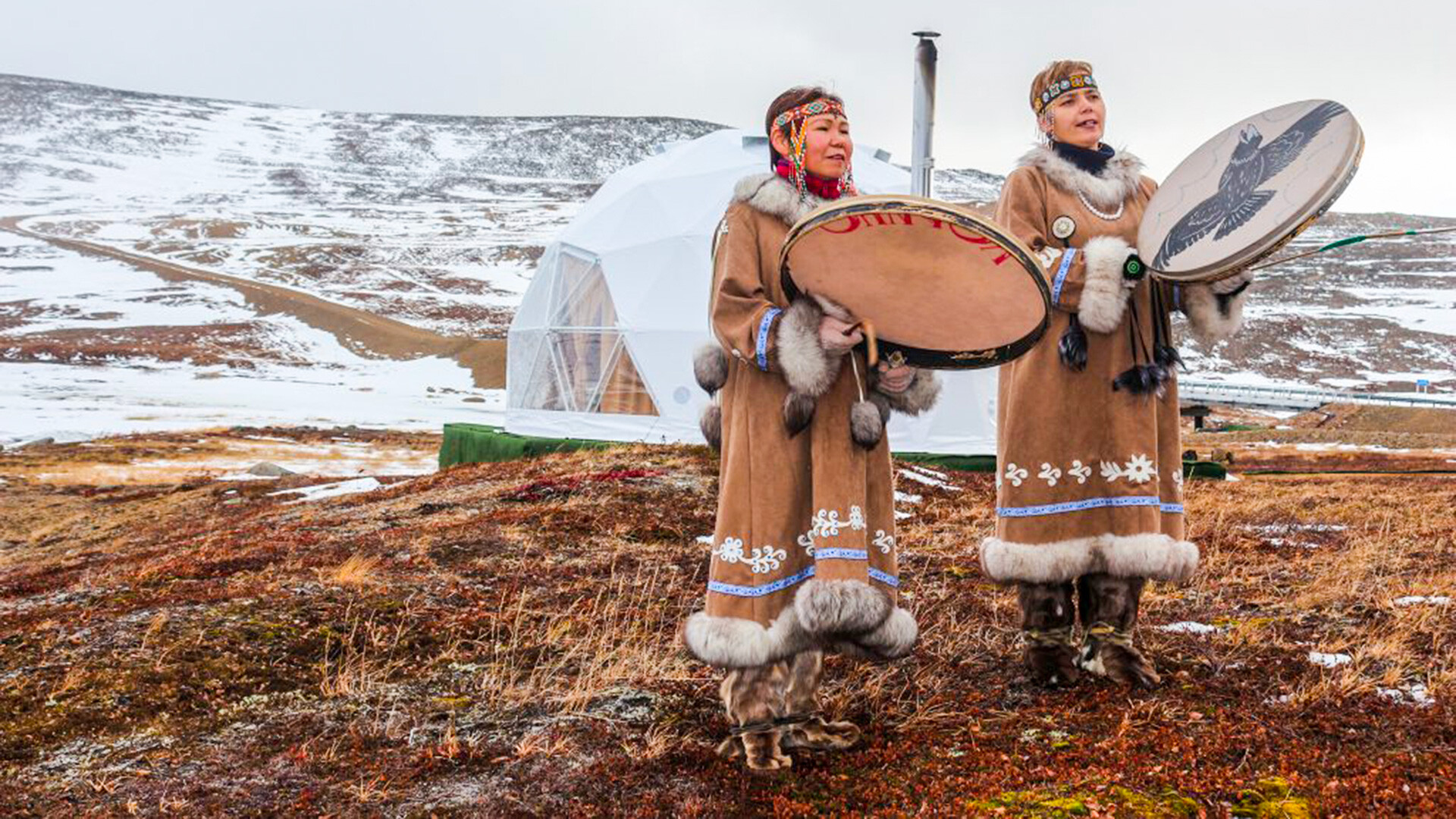
Chukotka is the most remote and sparsely populated region in northeastern Russia, sharing a sea border with the United States. Just imagine: Only 50,000 people live in an area the size of several European countries and, moreover, you need a helicopter or all-terrain vehicle to get from one village to another! A large part of Chukotka is situated beyond the Arctic Circle, so the climate here can hardly be described as mild. Tourists come here to discover the otherworldly tundra landscapes, to see polar and brown bears and observe the walruses - in a nutshell, to test their endurance in the wilderness. And, in one such place, which is as beautiful as it is deserted, a glamping site (derived from the words ‘glamorous’ and ‘camping’) - the first in the region - has recently opened. And it looks rather exotic!
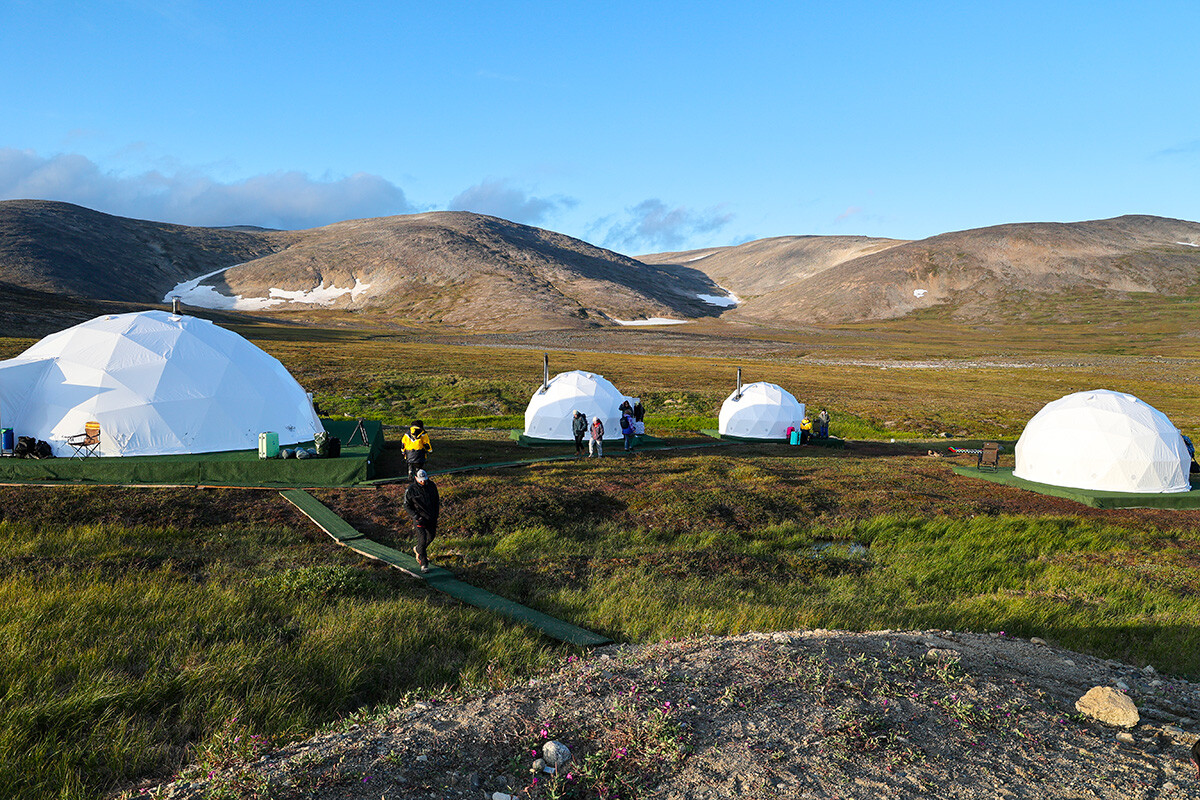
The ‘Umka’ tourist camp (‘umka’ is the local word for polar bear) is situated between the villages of Lavrentiya and Lorino about 100 km south of the Arctic Circle and the same distance from the easternmost point of Russia, Cape Dezhnev. It opened in September 2021 and has already hosted its first tourists - a group from Austria and Germany - before it had to be mothballed for the winter and spring owing to bad weather, says its founder Maxim Krupenya. His next guests, in early August 2022, were members of an expedition that was part of the ‘Bering Strait’ festival devoted to the development of tourism in Chukotka. Maxim is one of the local residents who has taken up the idea of developing tourism in the area with great enthusiasm.
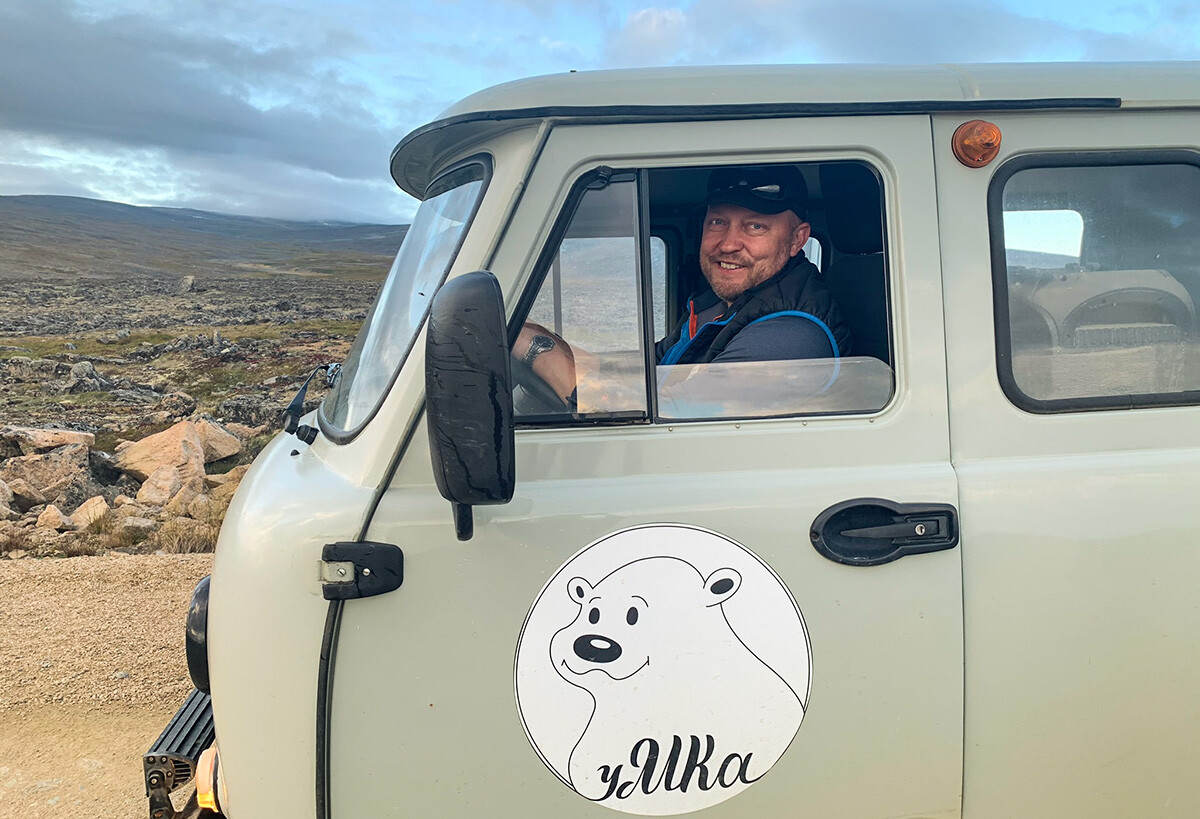
Maxim Krupenya in his UAZ car.
Anna Sorokina“All my life, I was in the military and moved to Chukotka to qualify for early retirement (one year of service here counts as two elsewhere, because of the harsh conditions). I knew firsthand that even tourists don’t get comfortable accommodation there. I wanted to prove that a good standard of service could be provided, even on the edge of the Earth,” he says. When Maxim retired in 2019, he decided to apply for free land under the Far Eastern Hectare Program (read more about the program here) and to open a glamping site. He took out a loan and bought six geodesic domes from a manufacturer in Altai Region. Five of them are residential and the sixth is a lounge/dining room.

Inside the big tent.
Umka GlampingThe campsite is designed for 12 people, but it can accommodate up to 20 guests if necessary. Inside, each dome has a double bed or two single beds, as well as a double bunk bed, clothes hangers and several electrical outlets. The domes are equipped with stoves - either gas or wood burning. One of the walls is transparent and has a view towards a mountain stream and hills covered in snow, even in summer.
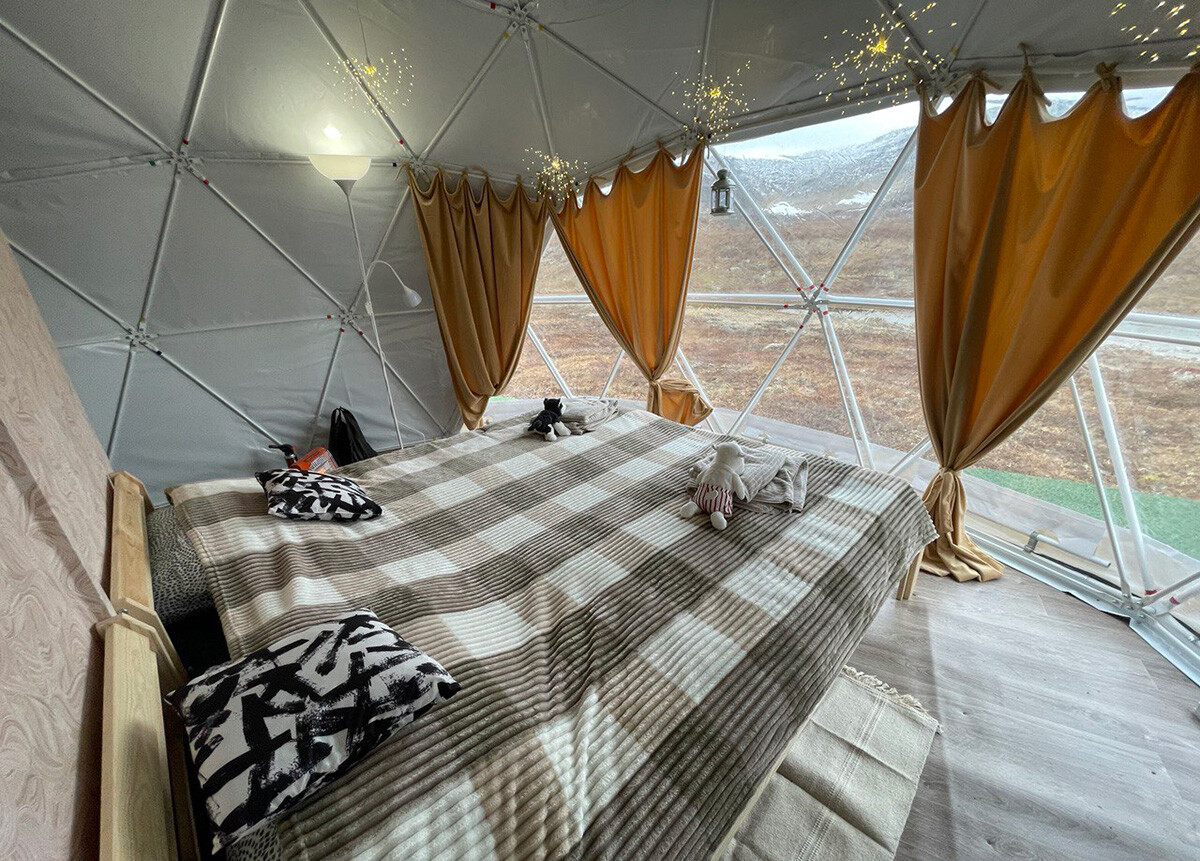
The view to the tundra.
Umka GlampingGuests at ‘Umka’ are expected to eat in the large communal dome: The staff at the glamping site use a large grill to prepare fish, meat, soup or coffee. Shashliks are grilled “out of doors”. Help with preparing more complicated dishes (our favorite patties, salads with mayonnaise, cooked cereals or side dishes) is provided by a canteen in the village of Lavrentiya. The sanitary facilities are in a detached small wooden building equipped with bio-toilets and a shower room. Water from the mountain stream is fed into a boiler and, after use, drains into a septic tank, where it is depurated and filtered and then discharged downstream, already purified.
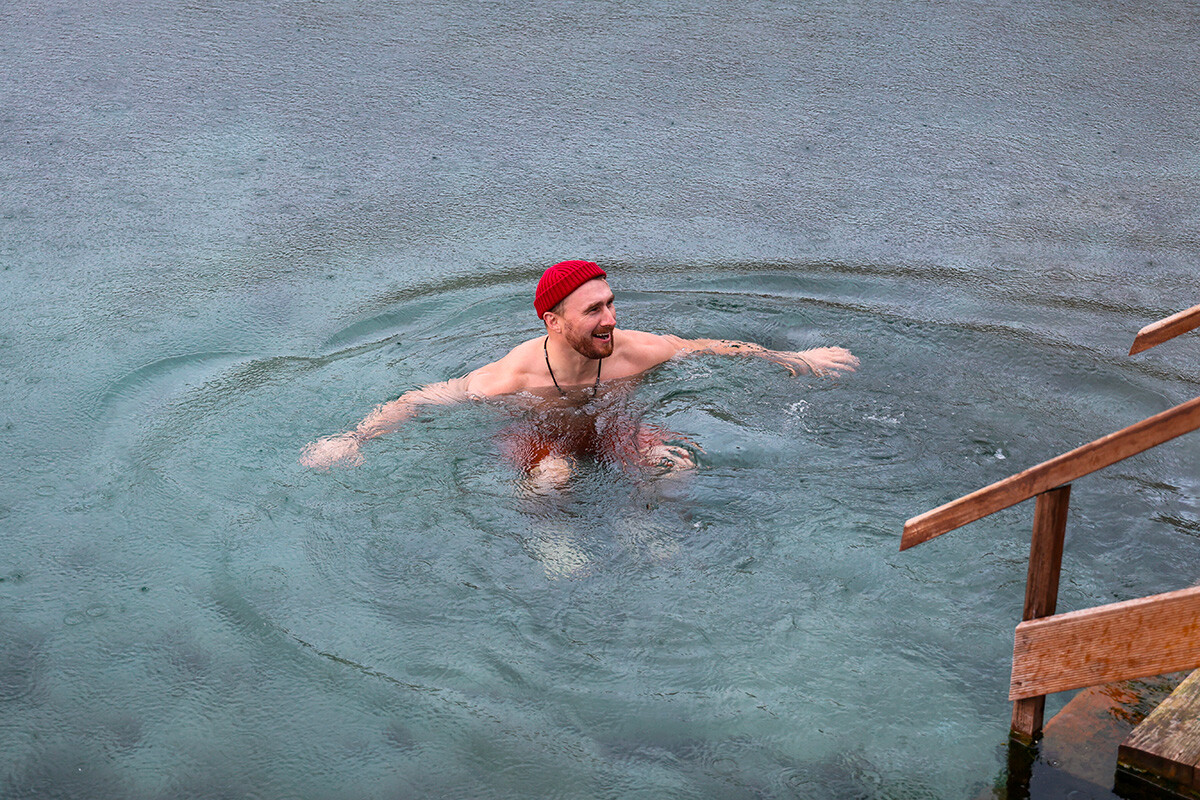
Bathing in the Lorino hot springs.
Vyacheslav Viktorov/RoscongressOne might ask what, if any, attractions there might be in the tundra. But it’s not all that bad in reality. Literally 10 minutes’ walk away are some hot springs - “a Chukchi Baden-Baden” - containing the slightly radioactive gas radon (used as a powerful treatment for a whole range of ailments). In the Soviet period, a Young Pioneer Camp and a hotel could be found next to the springs, but, today, only the shells of the former buildings remain. Nevertheless, residents of the nearest populated localities and tourist groups continue to visit. Maxim believes that, apart from the “long-term” tourists, people visiting the springs might want to stay at the glamping site for the night.
Twenty minutes’ drive away is the large indigenous village of Lorino on the shores of the Bering Sea - a destination for tourists who come to experience the culture and way of life of the local Chukchi people. Festivals, sports events and an annual maritime regatta, the ‘Beringiya’, in which traditional hand-made craft are used, take place there.
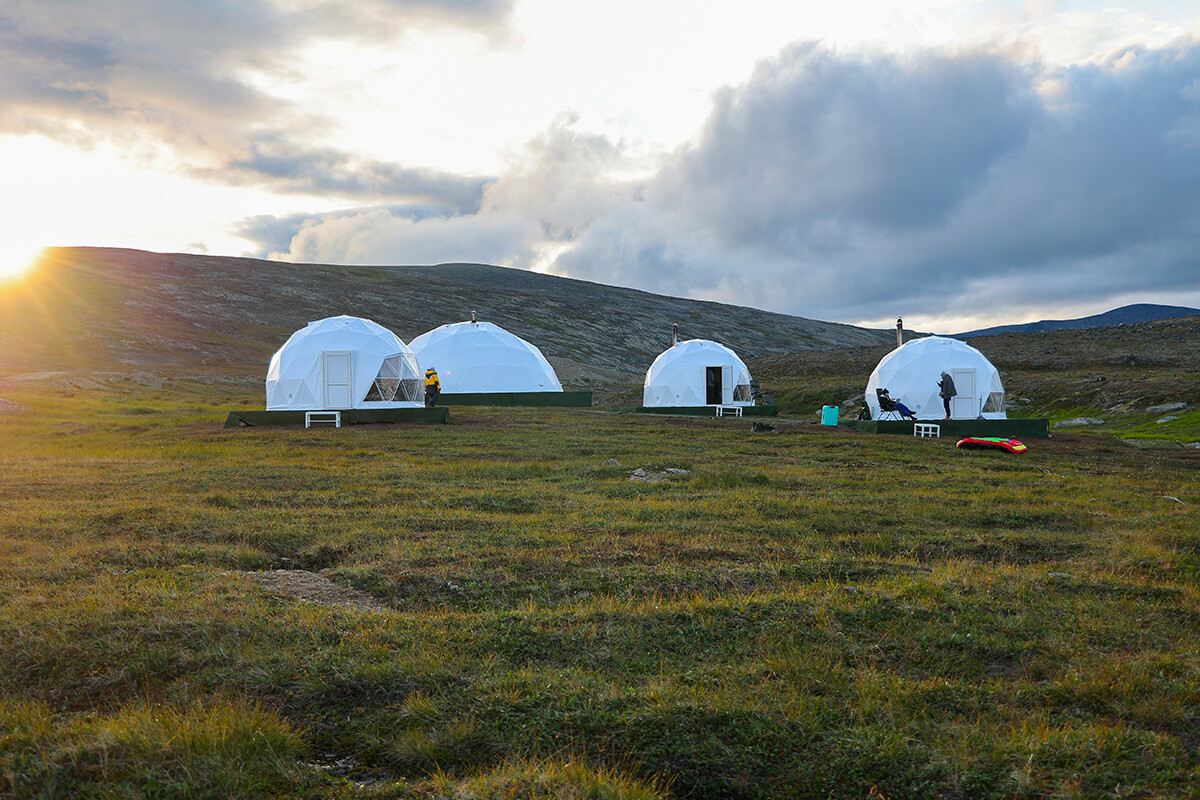
Maxim is passionate about the idea of converting the glamping site to “green energy”. The whole purpose would be to reduce the negative impact of human activity on the environment. After all, the tundra may be sparsely populated, but it is not without living things. There are rare protected species of plants (mosses, dwarf shrubs, reindeer lichen) and wild animals, such as bears and Arctic ground squirrels, and the cleanest of rivers. And all this needs to be preserved.
“Our site isn’t connected to the commercial power supply,” he says. “The tourist camp currently gets its electricity from a diesel generator and we bring fuel from the village, but I’d like all our power to come from a water turbine. We’d need to build something like a mini-dam here.” He is also thinking of putting up some wind turbines - there is no shortage of strong winds on the Chukotka Peninsula, so why not “harness” them?
Even last year, he believed that the glamping site would only operate in summer, but now he has given up on the idea of dismantling the structures. The domes have already withstood gusty winds and the stoves inside are quite good at heating the interiors. He now wants to see how the glamping site will withstand the winter.
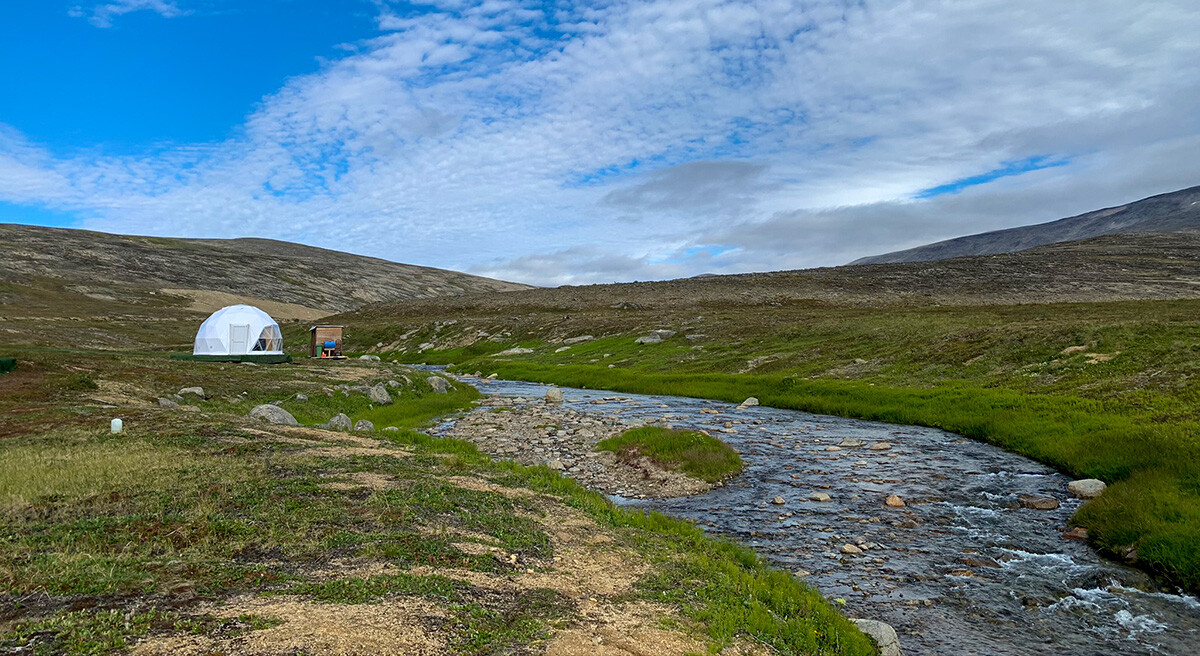
In addition, Maxim is trying to set up another site in Lavrentiya Bay, near the Bukhta Bezymyannaya inlet - this time for scientists who come to study the Arctic climate and marine creatures. This camp is supposed to be operated entirely from ecological sources of energy.
At one time, Maxim thought he would complete his stint in the army there and leave for the “mainland”, but he found he could not tear himself away from the North. Today, he spends a large part of the year in Kaliningrad and frequently returns to Chukotka. Even from the westernmost part of Russia, he cannot stop thinking about it and is even setting up a Chukotka-style glamping site there - with traditional tent-like yarangas as accommodation (he also plans to bring over and employ local Chukchi workers). Maxim says it’s his way of advertising and popularizing Chukotka and continuing his love affair with the peninsula.
Dear readers,
Our website and social media accounts are under threat of being restricted or banned, due to the current circumstances. So, to keep up with our latest content, simply do the following:
If using any of Russia Beyond's content, partly or in full, always provide an active hyperlink to the original material.
Subscribe
to our newsletter!
Get the week's best stories straight to your inbox